Cities around the world have heavy rains, which fall in concentrated periods, sometimes creating havoc in parts of the city. One of the strategies to answer this problem is to create short-term storage capacity for this excess water.
The water square Benthemplein in Rotterdam combines water storage with improving the quality of the urban public space. The water square can be understood as a twofold strategy. It makes money invested in water storage facilities visible and also generates opportunities to create environmental quality and give an identity to central spaces in neighbourhoods.
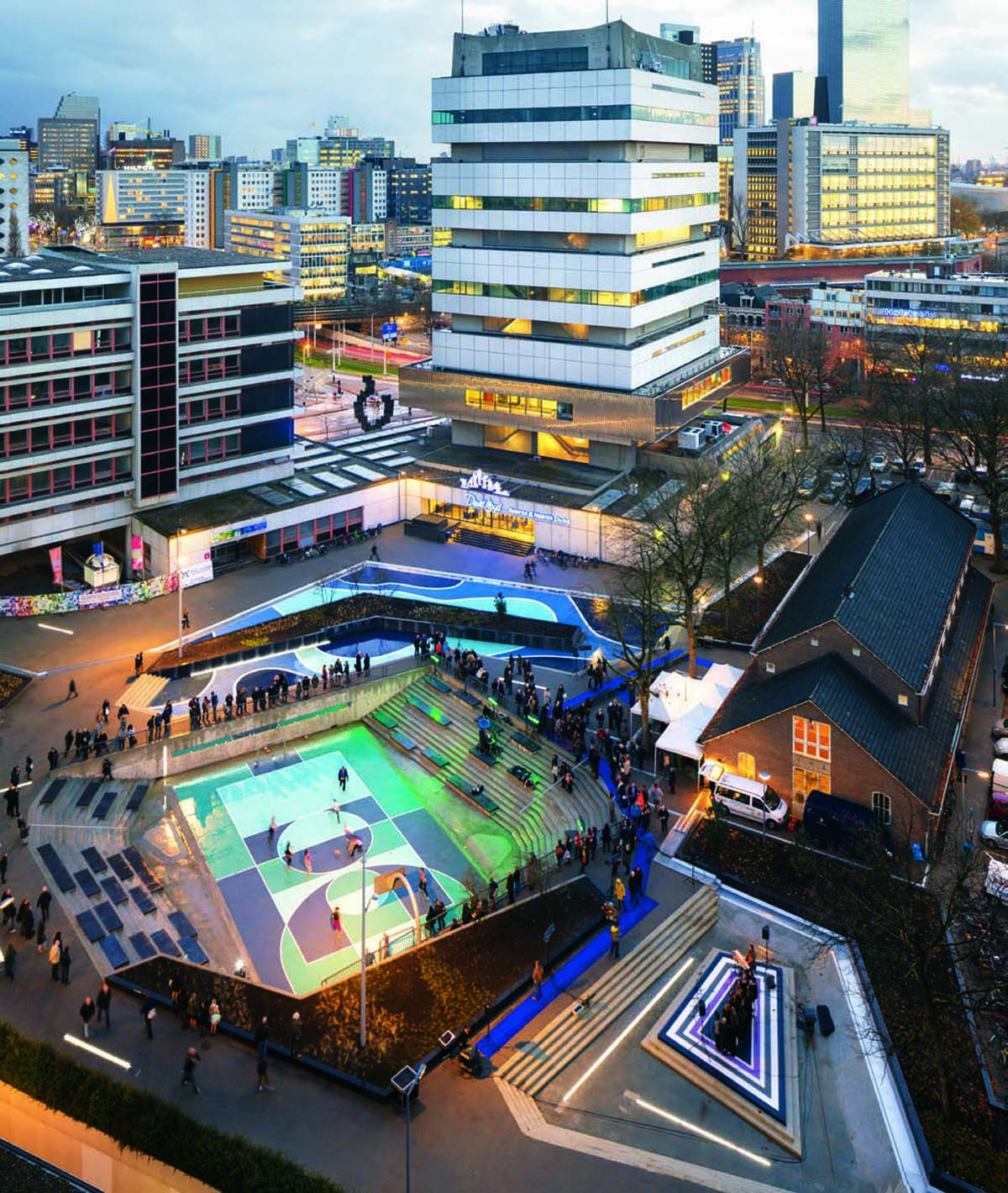
PHOTOGRAPH: OSSIP VAN DUIVENBODE
Most of the time the water square will be dry and in use as a recreational space.
In an intense participatory trajectory with the local community we jointly conceived ideas about the square: participants included students and teachers of the Zadkine College and the Graphic Lyceum; members of the adjacent church, youth theatre and David Lloyd gym as well as inhabitants of the Agniese neighbourhood. In three workshops we discussed possible uses, desired atmospheres and how the storm water can influence the square.
Everyone agreed that the water square should be a dynamic place for young people, lots of space for play and loitering but also some green intimate places. And what about the water? This had to be strikingly visible while running over the square. The enthusiasm of the participants helped us make a very positive design.
Three basins collect rainwater: two shallow basins for the immediate surroundings will receive water whenever it rains; one deeper basin receives water only when it consistently keeps raining. Here the water is collected from the larger area around the square. Rainwater is transported via large stainless steel gutters into the basins. The gutters are special features; they are oversized steel elements fit for people to skate on. Two other special features bring storm water to the square: a water wall and a rain well. Both dramatically and visibly channel the rainwater onto the square. The rain well is designed as a special beginning to the stainless steel gutter lifting itself from the ground.
This well brings the water from the adjacent building into the gutter. The water wall brings the water from further away into the deep basin. Here a rhythm of waterfalls is being directed in relation to the amount of water falling from the sky. Two more water extras complete the picture. An open-air baptistery is placed next to the church that is situated on the square. Here a small fountain starts from which the water meanders over the square into one of the shallow basins. And in the deep basin we ‘join the pipe’ and plant a drinking fountain for the thirsty athletes to enjoy.
After the rain, the water from the two shallow basins flows into an underground infiltration device and from here gradually seeps back into ground water. Thereby the ground water balance is kept at a particular level that can also cope with dry periods. This helps to keep the city trees and plants in good condition, which helps to reduce the urban heat island effect. The water of the deep basin flows back into the open water system of the city after a maximum of 36 hours to ensure public health. All the storm water that has been buffered does not flow into the mixed sewage system anymore. In this way, the conventional mixed sewage system is relieved and lowers the frequency of relatively dirty water from overflowing into the open water whenever it reaches its buffering capacity. By separating storm water gradually from the black water system with each intervention, the entire system, step by step, moves towards an improvement of the overall quality of the open water in the city.
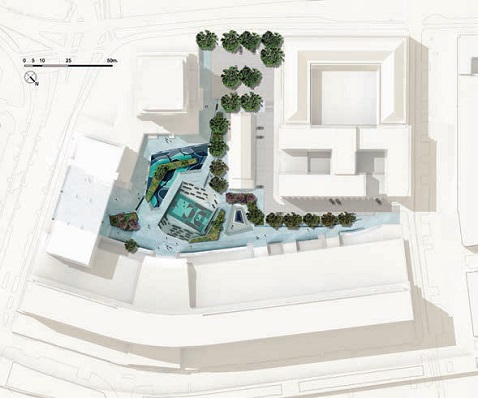 |
DRAWINGS: DE URBANSTEIN |
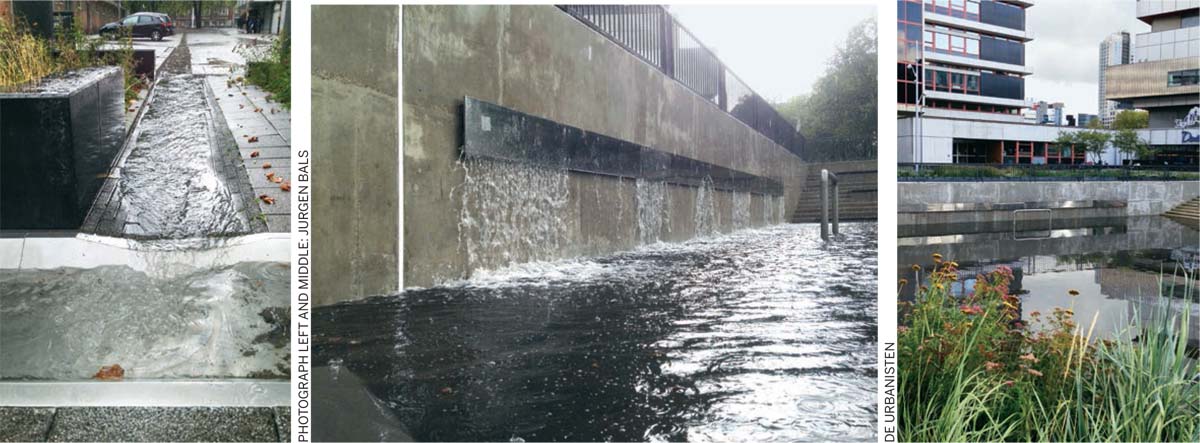
Left: Grand stainless steel gutter filling up
Middle: The rain gushing as a waterfall from the water wall into the deep basin
Right: The deep basin collecting rain water
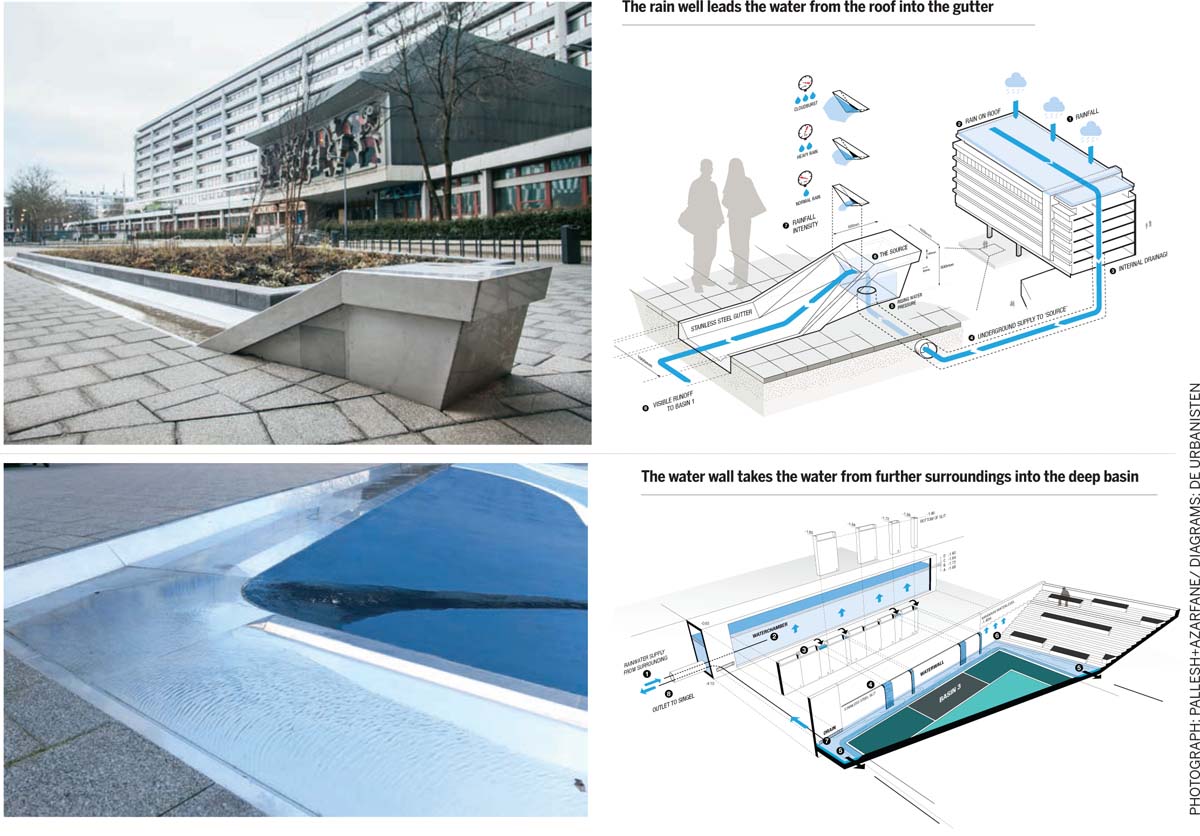
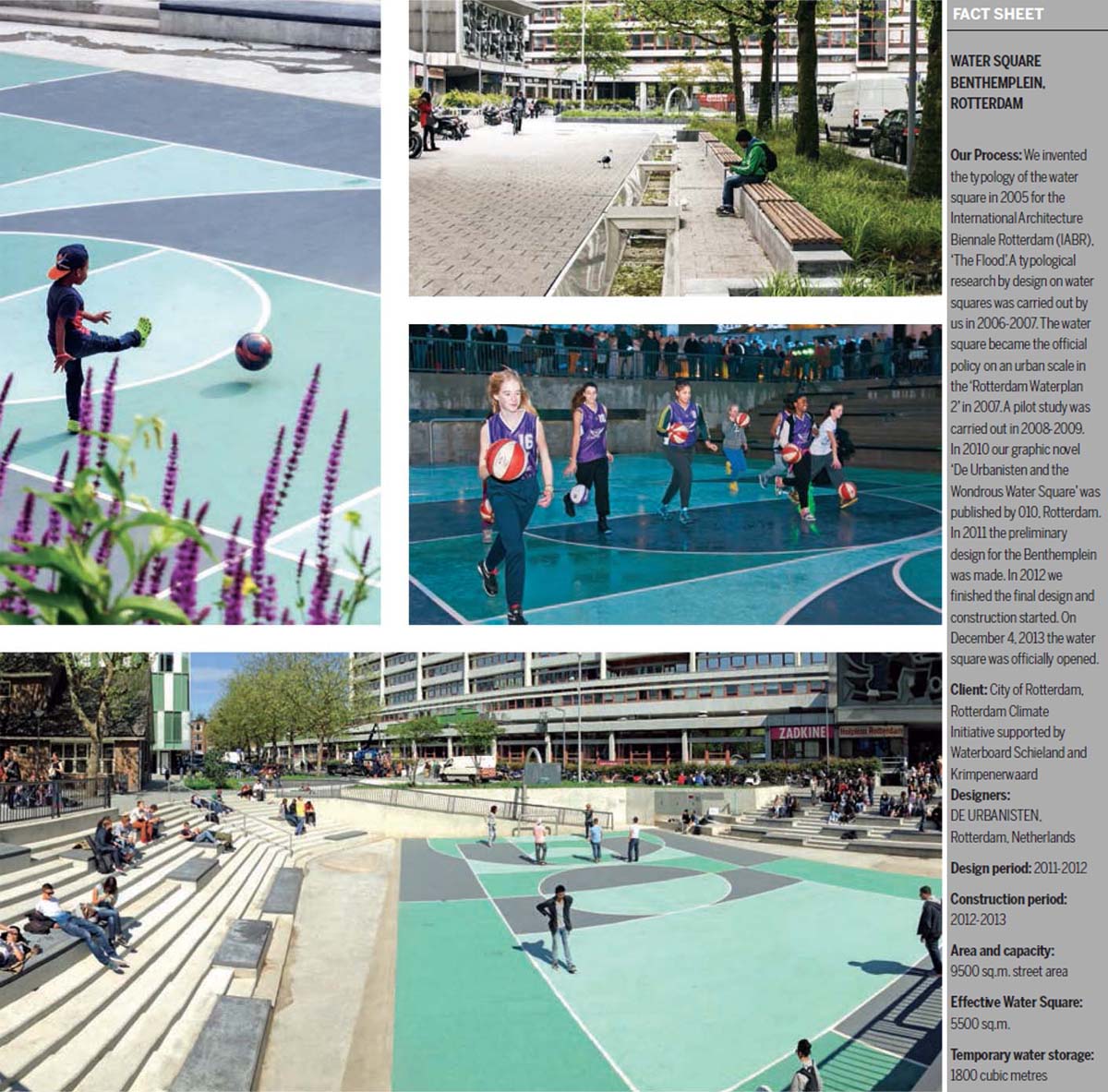
When it’s dry, the square is a feast for the active youth to play sports and simply hang out. The first shallow basin is fit for everyone on skates and whoever wants to watch them doing their thing.
The second shallow basin contains an island with a smooth ‘so you think you can dance’ floor area. The deep (third) basin is a true sports pit fit for football, volleyball and basketball and is set up like a grand theatre to sit, see and be seen. On each entrance we create more intimate places to sit and linger.
The planting plan emphasises the beautiful existing trees. We planted high grasses and wild flowers surrounding the trees framed by a concrete border at seating height to offer many informal places to relax.
The colour scheme emphasises the function of the water square: all that can flood is painted in shades of blue and all that transports water is shiny stainless steel. This means gutters receive extra attention and are made beautiful. And the floors of the three basins are painted in varied hues of blue that match the colours of the surroundings.
The space is gently defined and subdivided by a green structure that makes a difference in planting colours between the entrances and the centre of the square. Our water square creates a new context for the great modern building of the architect Maaskant and allows the fantastic artwork of Karel Appel to receive more attention.



Comments (0)